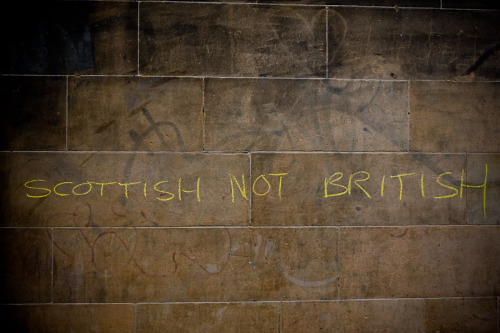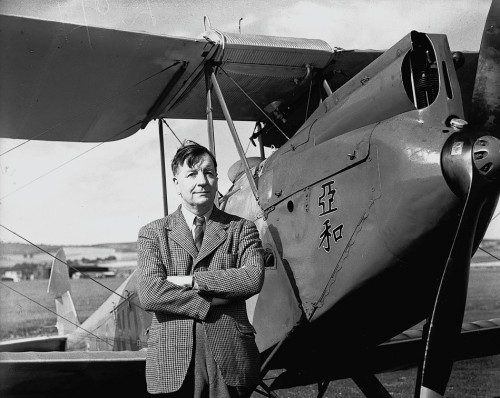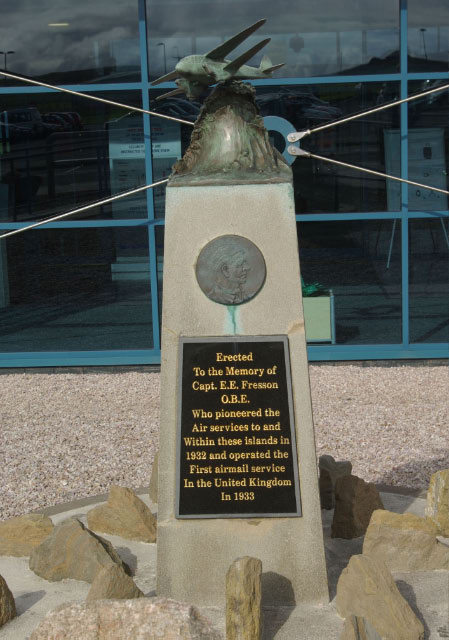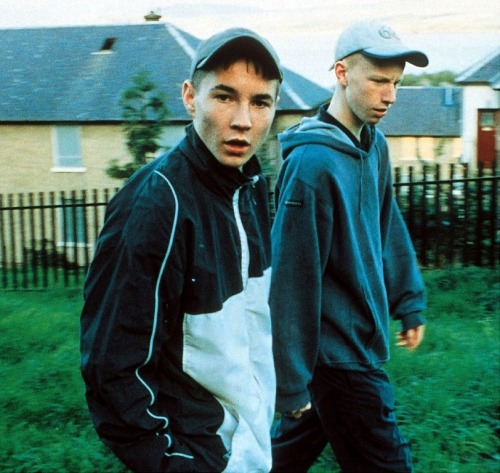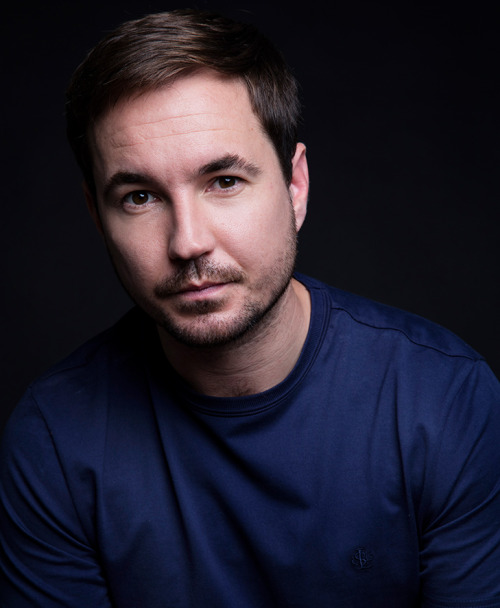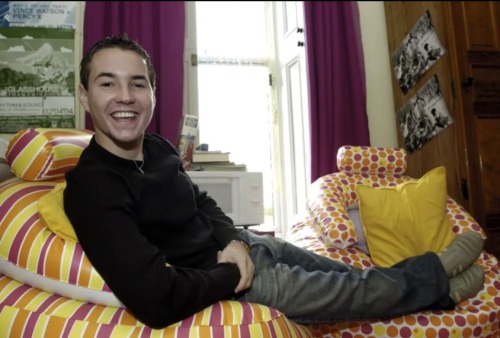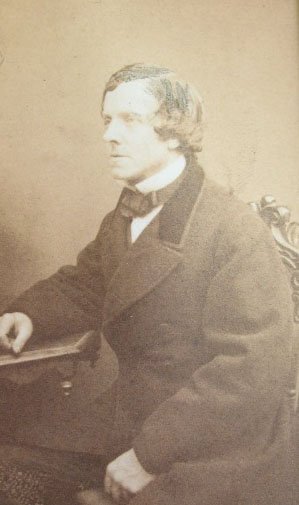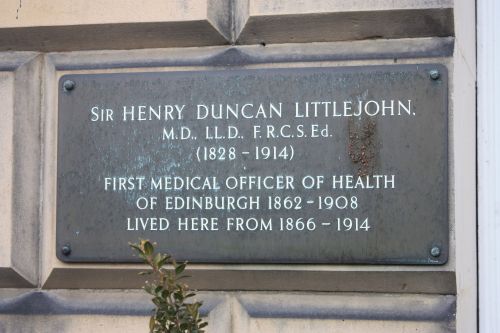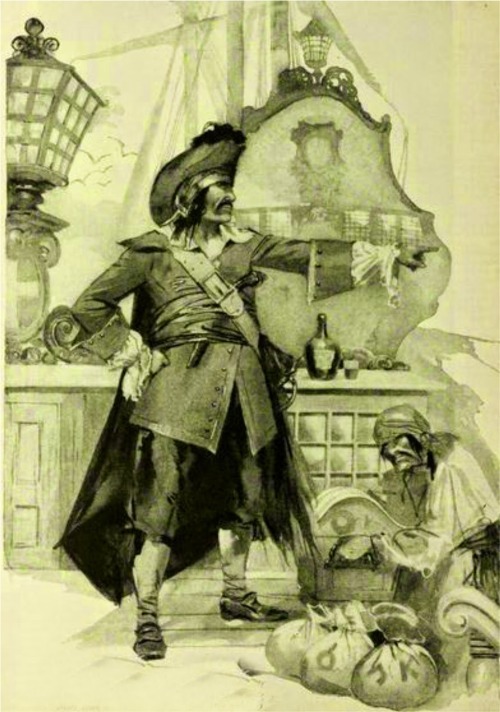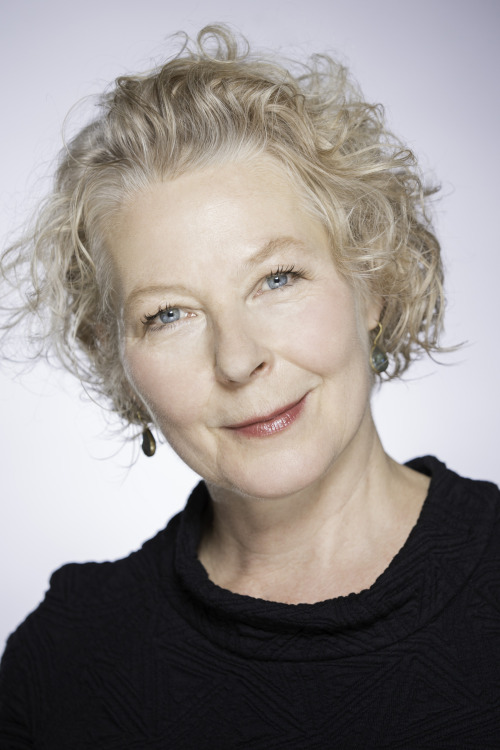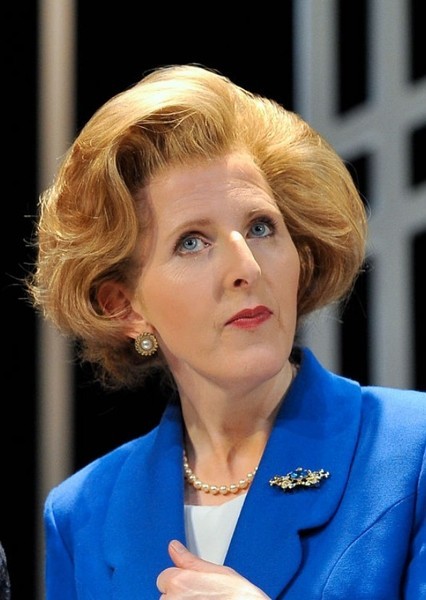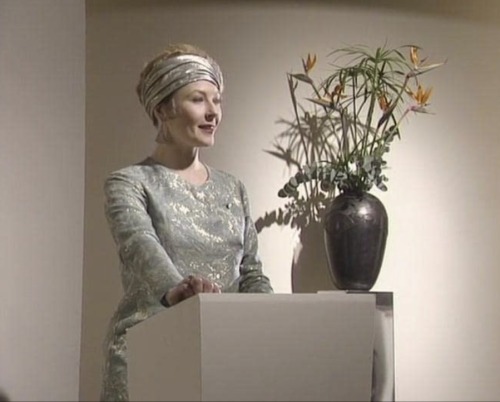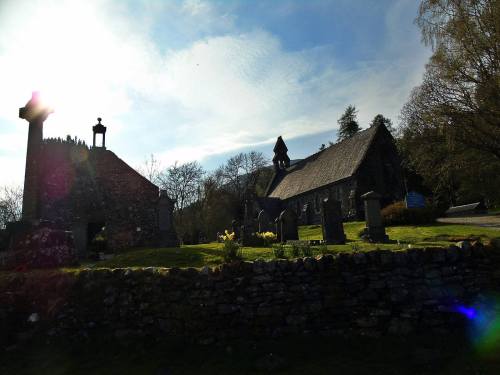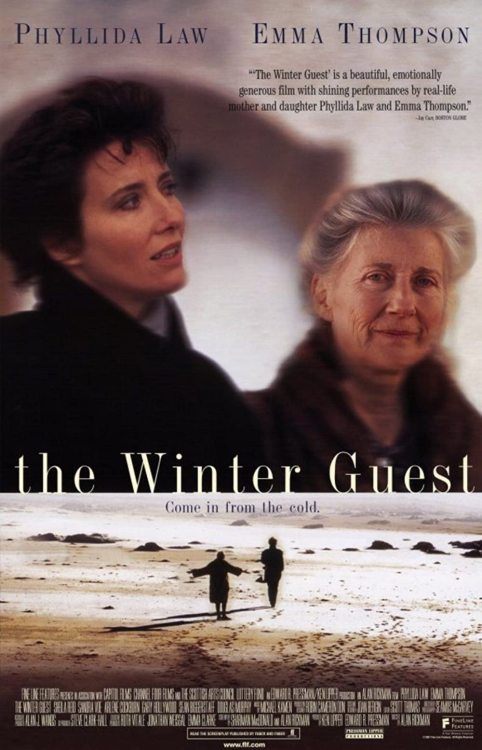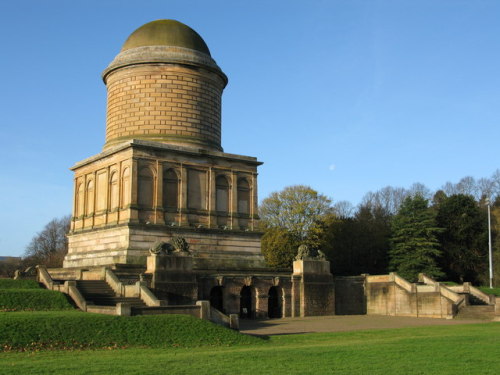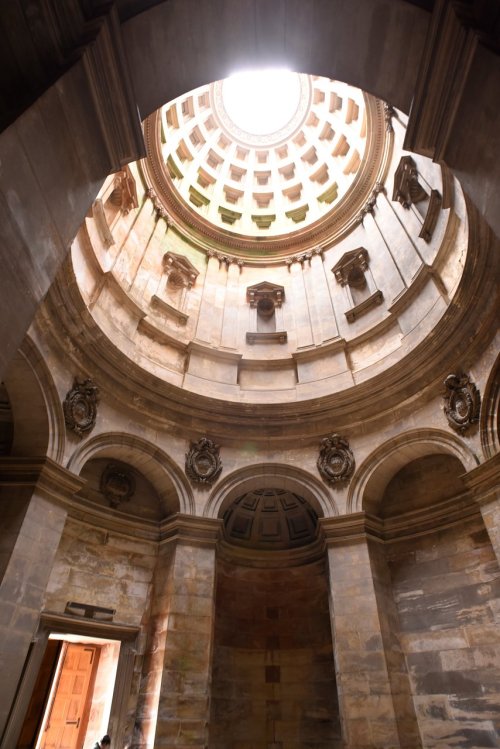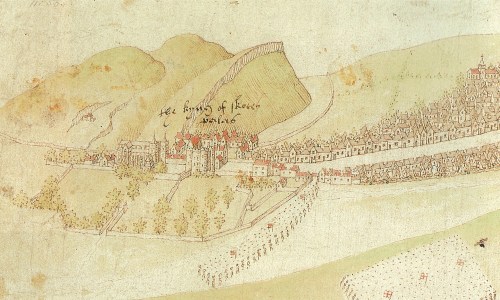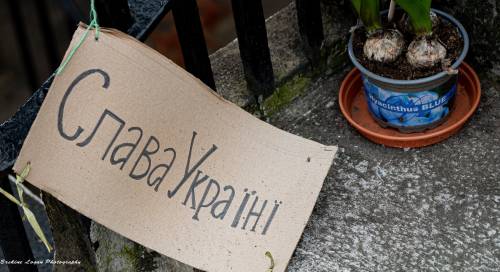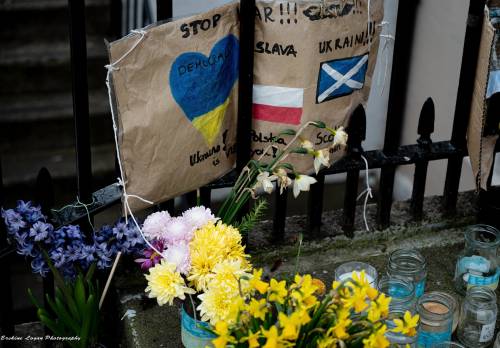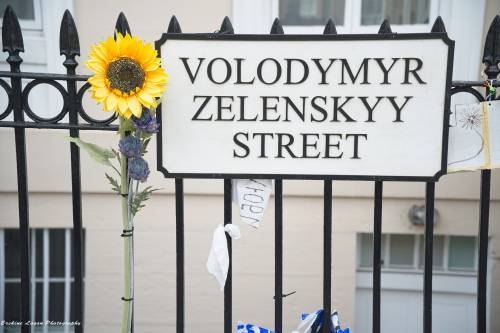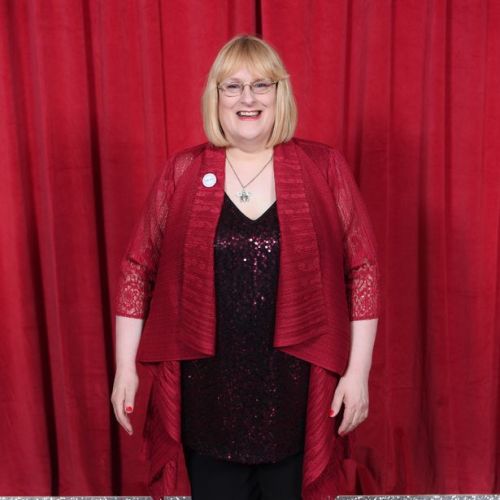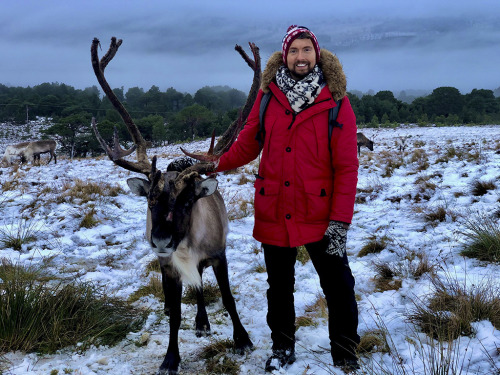#scottish
Scottish Gaelic vs. Irish Gaelic
What’s the difference between Scottish Gaelic and Irish Gaelic?
Like these videos? Become a Linguistic Discovery patron!
Linguistic Discovery is creating videos about linguistic diversity and language science! | Patreon
Scottish not British - found on the streets of Edinburgh.
Big vote happening today, saw this on the streets of Edinburgh when I was there a few years ago.
Post link
On May 8th 1933 Highland Airways was established by Captain Ernest Edmund “Ted” Fresson.
Highland Airways inaugural flight was a passenger service between Inverness, Wick and Kirkwall. Captain Ted Fresson’s pioneering commercial flights across the north of Scotland revolutionised Highland life and led to what is thought to be the longest-running scheduled air service in the world.
After early training as an engineer, he was sent to his firm’s branch in China in 1911, but following his boyhood aspirations to become a pilot he signed on as a volunteer when the Great War began in 1914. He trained as a pilot for the Royal Flying Corps in Canada at the beginning of 1918.
When the war was over he returned to China, keeping his hand in at flying whist working for his old firm again. He rebuilt or assembled some British aircraft for local dignitaries and then built and flew an aircraft of his own design for a Chinese warlord – to place it in production there. A revolution intervened and Ted returned to Britain in 1927 to begin several years of concentrated joy-riding and display flying, firstly with existing aviation companies, then with his own.
Each year saw him carrying thousands of air-minded passengers on five minute joy rides, at fields he chose all over Britain. During this time he took a great deal of liking to Scotland and saw an opportunity to start scheduled services in the Highlands. This started between Inverness, Wick and Kirkwall on May 8th 1933.
Ted formed his airline, Highland Airways Limited, with considerable help from Macrae & Dick, the motor engineers in Inverness, the Scotsman newspaper, Dr Alexander of Dr Grays Hospital in Elgin and other local traders. His regularity in flying in all weathers became a by-word, and so a year later, on May 29th 1934, his airline was given the first UK domestic Airmail contract by the Post Office. This was to fly mail at ordinary rates by air to Orkney and back. He later acquired the airmail contract to Wick and Shetland.
In October 1933, Ted operated the first commercial charter out of Aberdeen, carrying three salesmen to Shetland. On May 7th 1934 he began Aberdeen’s first scheduled service to Wick and Kirkwall. After this, Highland Airways became the trail blazer for many new services throughout the Highlands and Islands, linking up with Inverness and Aberdeen with Shetland and Stornoway, as well as inaugurating the Orkney inter-island flights and services to Perth and Glasgow.
Ted Fresson could land his aircraft in almost any field in Scotland and frequently did so. He knew the terrain so well that he became one of the principal advisors on airfield construction sites to the Air Ministry and the Admiralty during World War II. The booming regional airport at Inverness is still on the site suggested by Ted to the Air Ministry as a wartime airfield and the Admiralty also consulted him prior to laying the first tarmac strip at Hatston, Orkney. The tarmac was actually Ted’s suggestion. The ‘runways’ suggested by at the old Stornoway golf club so as to create least disturbance and inconvenience to the golfers are now acknowledged as the first runways in Britain.
When his airline became part of Lord Cowdray’s pre-war British Airways and was combined with the Renfrew-based Northern and Scottish Airways to form Scottish Airways (as it became), Ted Fresson played a vital part in running the airline throughout the war years. In 1947, however, all domestic air services were nationalised into the British European Airways corporation and Ted Fresson left the corporation in March 1948, dismissed without compensation for the fine airline he had built up. That Ted Fresson and other early pioneers were so treated by the government of the day is still a shameful episode in the history of aviation in Britain.
The fact that almost all his network is still being flown today is a tribute to his foresight, flying enterprise and efforts to bring air travel to everybody living in these remote parts of the British Isles.
After a period overseas Ted Fresson returned to the Highlands continued to fly the occasional charter in the Northern skies using his own light aircraft. He died in Inverness on September 25th 1963.
If you have ever been to Inverness airport you will no doubt have seen the statue tribute to the pioneer Highlands aviator Fresson.
Check out the link here for remarkable footage from the inaugural flight, including shots from the aircraft as it flies ove the River Ness. https://scotlandonscreen.org.uk/browse-fi…/007-000-002-099-c
Pics are Ernest Edmund “Ted” Fresson, his statue at Inverness airport, and a monument remembering him at Kirkwall Airport, and some of his aircraft.
You can find more pics with info on each on the excellent Ambaiie site here https://www.ambaile.org.uk/search/?searchQuery=Highland+Airways
Post link
Happy Birthday Scottish actor Martin Compston.
Born in Greenock on May 8th 1984 the second of two boys he attended St Columba’s High School in nearby Gourock. As a child he dreamed of becoming a footballer and at 17 left school to pursue that dream, he was soon signed by Morton Football Team.
Before leaving school his acting career began when Ken Loach discovered him at an audition at his old high school and gave him the lead role in Sweet Sixteen, which also starred a friend of mine, Gary McCormack as Martin’s step dad, Stan.
The movie was filmed in Martin’s home area, including Greenock, Gorcock, Inverkip, Kilmalcolm, and Wemyss Bay and was a huge success, which shot Martin into full view of the public and even gave some fame to Inverclyde. However, many counsellors thought that this was bad publicity because the film has to do with drugs and underage drinking. However, Ken Loach then made a statement that the movie was not based on Greenock and Inverclyde - but was only filmed there, as that was where Martin was located.
Martin’s subsequent film career was comparatively low-key, as he wanted to “serve his apprenticeship” with a regular role in the popular series Monarch of the Glen as Ewan Brodie. Since then we have seen Martin in some of the most popular shows on TV including, Silent Witness,, Victoria and In Plain Sight. His film roles have included playing the gangster Paul Ferris in the movie, The Wee Man, and as Lord Bothwell in the latest Mary Queen of Scots film on which he commented “Riding about on a horse, with a sword. It’s fantastic “
Sometimes the sign of a good actor is how well you can adapt your accent for the roles, and Martin does this with ease in perhaps his most famous role as anti corruption officer Sergeant Steve Arnott in the police drama Line of Duty, he has been in the series since it’s start in 2012 and has confirmed he will be returning to play Steve in a new series, the read throughs’ started just before lock down started and we shall not see the new shows now until well into 2021. Many people did not realise that Martin is Scottish and does speak with a guid Scots accent.
As for his football career Martin says “ I don’t regret giving up football for acting. I love football and am very proud I played for Morton. But the truth is, I wasn’t going to get much higher in football.” He made two first team starts for the team in the 2001/2002 season.
More recently Martin was last on our TV screens in the TV shows, Traces and The Nest, both shot primarily in Scotland, he has been married to actress Tianna Chanel Flynn since 2016, Traces just finished it’s second series recently, since then he appeared in the mini-series, Vigil and Our House, I await with anticipation on his next mini-aeries, The Rig, which also stars Iain Glenn, Mark Bonnar and Emun Elliot, three Scottish actors that feature amongst my post throughout the year.
As well as his acting work we will also see Marin on our screens with his friend and Gaelic television presenter, Phil MacHugh in Scottish Fling. The series will see the pair tour the country and see how it’s being shaped by its people and its landscape. We will see them journey from the bustling cities to the wild highlands to meet the locals and visitors that share their special love for Scotland. I think some might compare it to the Men in Kilts from Sam Heughan and McTavish, but I am hoping it will be a wee bit less frivol than that, and don’t think I mean that in a disparaging way towards them.
Post link
Henry Duncan Littlejohn was born in Edinburgh on May 8th 1826, Littlejohn is one of two Edinburgh men that are quoted as being an influence in Arthur Conan Doyle’s formation of the character Sherlock Homes.
Henry was educated in Perth before The Royal High school and the Edinburgh University studying medicine and graduating with distinction in 1847.
It’s quite a topical post given that Henry Littlejohn, whose appointment as the first Medical Officer of Health for Edinburgh was the first appointment of its kind in Scotland. He pioneered compulsory notification of infectious disease in Edinburgh leading to the introduction of such notification throughoutt Britain. The resultant mapping of diseases allowed active prevention and led to significant reduction in mortality during the 50 years of his office. He also achieved distinction in Forensic Medicine as an expert Crown witness for most of the major Scottish trials in the latter half of the 19th century.
Eloquent and erudite, he was regarded as an outstanding teacher amidst Edinburgh contemporaries who included some of the greatest medical teachers in the world.
In 1879 due to his influence a clause was included in the local Police Act requiring such notification giving Edinburgh the lead to the whole of Great Britain. This was to prove one of the major advances in public health of the 19th century. His “Report on the Sanitary Condition of the City of Edinburgh” proved a blueprint for social reform. It clearly demonstrated the effect of population density on the spread of disease and mortality. He was able to define the incidence of dip patients throughout the city and demonstrated a clear correlation between deprivation, disease and mortality. His proposals to improve this included recommendations about building, sewage, water pollution and limiting overcrowding. The Town Council were responsive to his recommendations and demolished many aging properties which had become dangers to health.
By the time of his retiral in 1908, after 46 years of service, mortality rates in Edinburgh from infectious disease had halved. Largely as a result of his efforts cholera and typhus had disappeared and smallpox had become a rarity.
The other inspiration I mentioned earlier, for Sherlock Holmes gets a mention here in this article about both him and Liltlejohn
Post link
May 8th 1701 saw the Scottish-born pirate “Captain” William Kidd tried for piracy at London’s Old Bailey.
Another Scotsman who turns up in my posts on a number of occasions, I will keep this one short as a follow up will tell the full story in about a fortnight.
William Kidd was the son of a minister in Greenock and was born around 1645. He emigrated to New York and married there, earning his living as a sea captain and a trader in the Caribbean. He successfully defended American and English trade routes in the 1690s in the war between France and England.
In 1695 Kidd sailed to London where he obtained a royal commission to act as a privateer against pirates in the Indian Ocean, operating from bases in Madagascar. Reports came back to England, however, that he was attacking merchant ships as well as pirates.
After capturing the fully laden “Quedah Merchant” with cargo worth over $100,000 he returned to Hispaniola (now Haiti). He was offered a pardon for his surrender and he sailed to Boston. He was treacherously captured and taken to London. In a rigged trial, with little real evidence and despite his claim that his crew had mutinied and he had no alternative but to join them, he was found guilty and hanged. The treasure from the “Quedah Merchant” has never been found.
Post link
Happy 59th Birthday Scottish actress Stella Gonet.
After a quiet start to the month it’s good to have a busy day today on the anniversary front, I’ve scheduled a few posts for later as I am off a walk up Ben Cleuch, the highest point in the Ochil Hills range, and being so unfit I might just not make it back!
Stella was born in 1963.her Scottish mother met her Polish father when her father was stationed in Greenock during the second World War, she was the seventh of twelve children and four of her sisters are nurses but Stella went on to further education at the Royal Scottish Academy of Music and Drama in Glasgow.
Since graduating Stella has made a good career for herself with many stage appearances and regularly turning up on our TV screens. Her first big role on TV was in the period drama House of Elliot, playing the part of Beatrice Eliott in all 34 episodes, on the Scottish front she has been in Taggart, of course, and The Crow Road and Rebus, her biggest role so far, in my opinion was as Jayne Grayson in the long running shows Casualty and Holby City as Chief Executive of the hospital.
In the past few years Stella has been in the sitcom Man Down, and tv series’ The Cry and the American-British parental comedy television series Breeders.
We last saw Stella on the small screen in Dundee crime drama Traces, with another of today’s birthday actors, Martin Compston
Stella is married to English actor Nicholas Farrell, they have two children.
Post link
On May 8th 1854 the remarkable, Robert Barclay Allardice, known as “ the celebrated pedestrian“,died.
The Barclay family which founded Barclays Bank were descended from this 2nd Laird, he married Sarah Ann Allardice, a descendant of Robert II of Scotland and of the Earls of Airth, Menteith, and Strathearn. In recognition of the nobility of his wife’s family, Robert Barclay thenceforth took the surname of Allardice.
Several of the Barclay family were noted for unusual strength. The 1st Laird of Ury known as “Robert the Strong” was reputed as one of the strongest men in the country at the time of the English Civil War, and Robert’s father was himself a noted pedestrian, who once walked 510 miles from the Ury Estate in Aberdeenshire, to London in 10 days, this would have been no mean task given there were no tarmac roads back then.
Oor “Captain” Barclay’s most notable achievement was walking 1,000 miles in 1,000 hours to win a bet!!
While still at Cambridge University, Robert undertook to walk from Fenchurch street, London to Birmingham via Cambridge, a distance of 150 miles, which he covered in two days in December 1799, to visit relatives. A few days later he made the return journey via Oxford in a similar time.
Most of Barclay’s later walks, like the 1,000 mile one, were due wagers with Robert Fletcher, the “Daft Laird” His feats include, 1801 he walked 110 miles in 19 hr 27 min in a muddy park, 1802 walking 64 miles in 10 hours, and this one makes me chuckle, in 1805 he walked 72 miles between breakfast and dinner, in 1806 he walked 100 miles over “bad roads” in 19 hours and then in 1807, 78 miles on hilly roads in 14 hours.
I mentioned the wagers, and while his walks were extraordinary, he lost a lot of money to the Daft Laird and is described as throwing away good money after bad.
He is considered the father of the 19th century sport of pedestrianism, a precursor to racewalking, he was inducted into the Sport Scotland Hall of Fame in 2002
Barclay met his end on the 8th May 1854, dying of paralysis a few days after being kicked by a horse.
There is an excellent lengthy page all about Robert Barclay Allardice, “Captain Barclay”, his family and of course his wagers on the link below, however the date of death on this article is given as May 1st, rather than the 8th as on wiki.
http://donaldpfox.blogspot.com/2018/10/robert-barclay-allardice-captain.html
Post link
Happy 90th Birthday Scottish actress Phyllida Law, born on May 8th 1932 in Glasgow.
I always love announcing events like this where the person in my post has had as long successful life and career, and Phyllida certainly falls into this category.
There is very little about her early life except she was born in Glasgow, the daughter of Megsie “Meg” and William Law, a journalist, we don’t even know if Phyllida has any siblings, the only comment she has made about her upbrining is “When you grow up in Glasgow with a Glaswegian granny, you’re taught that pride is a wicked thing. I still feel a bit like that.“ The little we know is she grew up in Glasgow’s west end, just off Great Western Road, and when war broke out when she was just seven and she found herself evacuated to places such as Lenzie, in Dunbartonshire, and Skelmorlie, Ayrshire.
That gave her a love for the Scots countryside which means she now splits her life between her home in London and a family cottage in Argyll. Phyllida would fit in well with the Scottish & Proud ethos, in an interview she says:
“I’m passionate about my Scots heritage. How could I not be? I can’t live without it. There’s no way I could live without those hills and it’s got to be the west coast.
“I sometimes travel to Edinburgh then go up to Pittenweem or somewhere and I think to myself, ‘This isn’t Scotland.’ It’s a wonderful coastline but it’s not Scotland for me.
“When my parents lived in Glasgow they were always looking for a cottage to which they could retire. They found one in Ardentinney, so I visit that a lot.
She joined the Bristol Old Vic in 1952, from what I can gather she was first in the wardrobe department, the first pic shows her standing, from a 1952 photo.
Heron screen acting credits start in 1958 and are very extensive, the pick of them are Dixon of Dock Green and a stint as the storyteller in the great children’s show Jackanory in the 60’s. It must have been during her time in the BBC’s children’s TV department she met her husband to be, Eric Thompson, they married in 1957, he went on to narrate The Magic Roundabout
Angels in the 70’s and of course Taggart in the 80’s followed, as well Thomson, the variety series hosted by actress Emma Thompson in 1988, Emma just happens to be her daughter. Heartbeat, Hamish Macbeth and Dangerfield in the 90’s, Waking the dead and Doctors in the noughties has kept her busy, now in her 86th year she has still been appearing on the small screen, in The Other Wife and New Tricks during the past 8 years. Film roles include She is known for her work on Much Ado About Nothing , The Time Machine and The Winter Guest.
Phyllida spends most of her time in Argyll in a house she shares with her actress daughter, Emma. The second picture shows mother and daughter receiving honorary degrees from The Royal Conservatoire in Glasgow in 2013. Her other daughter, Sophie is also a talented actress.
With Phyllida’s advance years she is classified as ‘extremely vulnerable’ category in the current climate, Emma, who spends most of her time in Italy, flew out from her home in Venice, just as the corona virus was starting to take hold in the country, arriving in Scotland in early March to look after her mother in her home on the banks of Loch Eck. Emma has a love for Scotland too and once said of the loch …
“I’ve played on its banks, picnicked on its beaches, swum in its chilly, unsalted depths, cycled round it, drunk it, got drunk near it, kissed in boats on it, got married near it and never wearied of it.”
When asked, The way you would spend your fantasy 24 hours, with no travel restrictions she answered
I’d take my best friend Mildew on a tour of the islands of Scotland,
which of course id the correct answer!
The third pic is from 1998 when Phyllida was a mere 66 years young, it is of Emma and Alan Rickman at The Winter Guest. Next up is with Emma again, this time at the 1993 Oscars. The last pic is proud Mother with her two daughters.
Post link
The Scottish Suffragette and campaigner Arabella Scott was born on May 7th 1886 in Dunoon.
Arabella’s mother was a teacher and her father served as a captain in the army for more than 25 years, she attended The University of Edinburgh and gained a Master of Arts degree and went on to become a schoolteacher.
Both Arabella and her sister Muriel were advocates for women’s suffrage and were active speakers in Scotland for the cause and in 1909, were both arrested on the charge of obstruction in London after they tried to hand a petition to the British Prime Minister Asquith. They served 21 days at H M Prison Holloway.
Arabella was arrested and released several times over the following years, under the Cat and Mouse Act, and Act put into place so that suffragettes could not kill themselves in prison due to hunger strikes, instead when they became too weak they were released and then re-arrested at a later time.
In May 1913 Arabella was arrested with three other women and one man after an unsuccessful attempt to burn down Kelso Racecourse. She was sentenced to nine months imprisonment – as was the man whose crime was to drive them there. Janie Allen a suffragette journalist, bitterly compared his sentence with those who assaulted children and often got less than that.
She went on hunger strike and was released under the Cat and Mouse Act. Unlike others who went to ground once they were released Arabella stayed public. She had promised her employers, Leith School Board, that she would not take part in any more militant activity so she was kept on their list. She was arrested, went on hunger strike released and disappeared for 2 months. She was ‘found’ on a WSPU protest and returned to jail. She went on hunger strike again and was released again..
It took many months to ‘find’ her again, this time working as a WSPU organiser in Brighton. She was arrested and forcibly brought back to Edinburgh and jail. Again the same scenario ensued and she took the train to London before she was due back. She was ‘found’ accidentally while the house she was staying in was being searched for someone else. So, once again she was forcibly brought back but this time sent to Perth prison to be force fed and was “the longest force-fed prisoner in Scotland” for 5 weeks, a visible legacy of this remained in her chipped teeth. These were her battle scars, sustained when she tried to resist being force fed, her mouth held open and a mixture of eggs flour and milk were poured down her throat through a tube attached to a funnel, this happened twice a day every day during her incarceration
Outside the prison gates, 3,000 people kept a vigil, although they were not even told what exactly was going in inside.
She emerged feeling more militant than ever.
All her life Arabella Scott upheld a passionate commitment to women’s rights, under her married name Colville-Reeves emigrated to Australia.
She died on 27 August 1980, and her memorial is in the Palmdale Lawn Cemetery on the Central Coast of New South Wales.
Isn’t it atrocious what society inflicted on these women, to me it amounts to torture.
Post link
May 7th 1876 saw the death of the leading Scottish architect David Bryce.
Bryce was born in Edinburgh, where his father was a successful builder. He was educated at the Royal High School and joined the office of the architect William Burn in 1825, at the age of 22. By 1841, Bryce had risen to be Burn’s partner. Burn and Bryce formally dissolved their partnership in 1845, with disputes over the building of St Mary’s Church, Dalkeith, Midlothian, for the Duke of Buccleuch.
Burn moved to London, and Bryce succeeded to a very large and increasing practice, to which he devoted himself with the enthusiasm of an artistic temperament and untiring energy and perseverance. In the course of a busy and successful career, which was actively continued almost down to his death, he became the top architect in Scotland, and designed important works in most of the principal towns of the country.
In 1835 he was elected an associate of the Royal Scottish Academy, he was also a fellow of the Royal Institute of British Architects, of the Architectural Institute of Scotland, of the Royal Society of Edinburgh, and officiated for several years as grand architect to the Grand Lodge of Masons in Scotland.
Bryce died on 7 May 1876, after a short illness from bronchitis, leaving many important works in progress, which were completed under the superintendence of his nephew, who had been his partner for some years, and who succeeded to his business. He died unmarried.
He is buried in the New Calton Cemetery in Edinburgh just west of the main north-south path, beside his nephew, John Bryce, who I mentioned finished many of his uncles projects.
Of Bryce’s work the most famous, imho are, in two of the pics, interior and exterior, The Hamilton Mausoleum, which has one of the longest-lasting echoes in the world. Falkland Parish Church and The Royal Exchange Building in Dundee
Post link
7th of May 1865 saw the birth of Jessie MacLaren MacGregor in Edinburgh.
MacLaren MacGregor was one of the first women to be awarded an MD by The University of Edinburgh, along with Elsie Inglis she was instrumental in setting up the Muir Hall of Residence for Women Students in Edinburgh, and a Hospice on the Royal Mile, a nursing home and maternity hospital for poor women.
Jessie was a student of Sophia Jex-Blake at the Edinburgh School of Medicine for Women and was one of the first women to undertake a medical degree at the University of Edinburgh, after the barriers to women qualifying as doctors were removed by the University.
She took her Bachelor of Medicine degree in 1896, achieving first-class honours in every subject in the curriculum, passing all her professional examinations in the shortest time possible, and being awarded the Arthur Scholarship. 3 years later, she took her MD (Doctor of Medicine), winning a gold medal for her thesis on the comparative anatomy of the auditory nerve.
In 1905, for family reasons, she left her practice in Edinburgh and emigrated to the Denver, Colorado, USA, but in 1906 sadly died at the age of 42 of acute cerebral meningitis.
Post link
On 7th May 1544 the Earl of Hertford who had landed an army at Leith days earlier, began what is known as The Burning of Edinburgh, marking the beginning of “The Rough Wooing”.
The Rough Wooing as an attempt the English made to force the marriage of King Henry VIII’S son Edward, to Mary, Queen of Scots.
This all started after Mary’s father James V lost the Battle of Solway Moss in November 1542. By all accounts there wasn’t a lot of bloodshed at the battle, the main outcome was over 100 “high value” prisoners were taken by the English, it was using these prisoners that Henry had a bargaining chip, but having said that the Scottish Reformation was now starting to gather pace and the Scots in general, well the nobility, were split into two factions, those loyal to the status quo and close ties with France i.e the Catholics, and those who wanted to forge closer relations with England, the Protestants.
James V had died within weeks of losing at Solway, and days after Mary Stewart was born, this left James Hamilton, Earl of Arran as Regent to the infant, Arran was initially all for this marriage and signed the Treaty of Greenwich in July 1543, which accorded a peace between the countries, Mary to marry Edward, it was also agreed that Arran’s son James would marry Princess Elizabeth, the daughter of Henry VIII and Anne Boleyn.
Even though, as I said, some Scots supported the treaty, the Scottish Parliament renounced the Treaty of Greenwich in December 1543. Add to the mmi Arran dramatically switching sides after a meeting with Cardinal David Beaton and him agreeing to a rival plan to send the Scots queen to France to marry the dauphin, Francis.
Well of course Henry VIII, nit a man with the best of temperaments was furious and declared war that same month.
The English landed at Grantor on May 3rd and were met with very little resistance as they marched took Leith and encamped there until heavy artillery arrived on the 5th on more English ships, these guns were to be used against Edinburgh’s gates and the castle.
The main English force approached Edinburgh on May 6th and were met by the Provost Adam Otterburn and two heralds. Otterburn offered to give up the keys of the town on conditions. Hertford refused to accept as he had no authority to bargain. An English herald went to the Castle, and returned with the news that the Earl of Huntly and Lord Home had brought 2000 horsemen to defend the town.
Hertford ordered his artillery up to the Canongate to Edinburgh’s Netherbow Port, the east gate into the city. During this operation some of the English gunners were killed small arms fire and archers exchanged blows, but after three or four rounds, the gate was breached and the English army stormed through killing 300 to 400 defenders. They attempted to set their heavy artillery around the area we know as the Lawnmarket, on the way to Castle Hill, but the Scottish cannons from the castle easily picked them off, with that Hertford ordered a tactical retreat. At the end of that day, the English retired from the town to their camp at Leith after starting a number of fires.
On 7th May, they returned to the city starting more fire-raising and looting, Lord Hertford and his companions wrote that they watched Edinburgh burn from a hill beside the town and could hear “women and poor miserable creatures” crying out and blaming the Cardinal(Beaton). This may have been English propaganda, but they were known to have sent pro-English agents instructed to spread the word that the invasion was solely the fault of Cardinal Beaton, who was accused of leading Arran astray. The aim was to ferment anti-catholic feeling and bolster the protestant faction.
Contemporary accounts suggest every building in the capital, including Holyrood Abbey and the palace, was burnt. Only the castle held out against the invaders. Scottish artillery within the Castle harassed the English forces, who had neither the time nor the resources to besiege the Castle, their ships were filled with looted goods at Leith and sailed south in two ships that had belonged to James V of Scotland.
The English army retreated over land, burning villages as it went, so although Edinburgh faired the worst many other towns and villages were destroyed, including Craigmillar Castle, Musselburgh, Kinghorn, Haddington, Tranent, Dunbar, St Monans, South Queensferry, a part of Pittenweem and Burntisland
Although Edinburgh was not again threatened by the war, rebuilding was a slow process. New buildings were built on the exact site of their predecessors.
The Scots gained some revenge the following year at the battle of Ancrum Moor. An army led by Arran routed an English force, which had been marauding in the Borders. Mary was eventually sent to France in 1548, by this time the French had sent some troops over to help defend Leith, Arran with the backing of most of his nobles by this time, steadfastly refused to negotiate in any way.
A peace treaty between France and England in March 1550 effectively ended the conflict. A formal peace was agreed with Scotland the following year.
The phrase ‘Rough Wooing’ is thought to derive from a remark attributed to George Gordon, Earl of Huntly by Patrick Abercromby. “We liked not the manner of the wooing, and we could not stoop to being bullied into love.” This was popularised by the writings of Sir Walter Scott. By the mid-19th century the term had began to appear in history books, the conflict was originally known in Scotland as the Eight or Nine Year’s War.
Post link
Consulate of Ukraine, Edinburgh.
Many have been calling for a street to be renamed in support of Ukraine and it’s president, but someone has made a street sign and added it to the railings outside the consulate on Windsor Street.
The pedestrian path is also surrounded by banners and decoration in support of Ukraine following the invasion of Russia.
Messages left include “stand with Ukraine”, “support Ukraine” and “UK help Ukraine”.
Erskine Logan Photography on Facebook.
Post link
Happy Birthday Scottish actress Annie Wallace.
Annie was brought up in Aberdeen and is a former National Youth Theatre member, she graduated from the Manchester Metropolitan School of Theatre in 2004, and has also appeared in many theatre productions. As well as being an actress, Annie writes and records music, and has two albums already released. She is also a skilled sound recordist and designer.
Annie was the consultant for the character of Coronation Street’s Hayley Cropper from 1998-2000, developing a friendship with the writers and the actress Julie Hesmondhalgh. This led to her applying to drama school and eventually becoming a professional actress in her own right appearing on stage in Manchester in productions including Withnail and I and Wyrd Sisters.
On the 29th of October 2015, she became made history by becoming the first transgender person to play a regular transgender character in a UK soap opera when she debuted as school head teacher Sally St. Claire in Channel 4’s Hollyoaks.
Annie is one of several Scots over the years who are or have been regulars on the Channel Four soap set in Chester
Wallace has been nominated for and on many awards over the years, most notable, The National Diversity Awards 2016 she was Celebrity of the Year, the Proud Scotland Awards she was awarded a gong for Outstanding Trans Activism. Annie was also the first transgender star nominated for a Scottish Bafta.
Away from Hollyoaks, Annie has appeared on Celebrity Mastermind, where she specialist subject was Doctor Who from 1970 to 1980.
Annie revealed she was trans during a Manchester Pride panel in 2015 which discussed the writing of LGBTQ+ characters on television.
Speaking to Lorraine earlier last year, the soap star said: “I turned 50 in May 2015 and I went, you know what, I am at this stage where I really don’t care what people think of me anymore. I just thought this is the time to come out.”
Since then she hasn’t looked back, well done Annie.
Post link
Happy 40th Birthday, the popular STV weather man Seán Batty.
Born in Paisley in 1982, he spent some of his early childhood, here in Falkirk and attended Carron primary school in the town before moving back to Paisley where he went to Castlehead High School and studied Meteorology at Reading University.
His interest in meteorology began when he was only seven years old, after receiving a BBC weather kit for his birthday. Batty became the weather forecaster for the School newspaper as well as the regional newspaper, The Paisley Daily Express for a few months during the summer of 1996.
Batty joined the Met Office as a weather observer at the school of Army Training at Middle Wallop airbase near Andover, Hampshire. He later worked with the ITV Weather team preparing TV weather graphics and maps for S4C, UTV and ITV.
In 2004 he joined the BBC as a broadcast assistant. Seán has been working in Scotland for STV Weather since August 2007.
Batty was nominated for the BAFTA Scotland Lloyds TSB Scotland Award for Most Popular Scottish Presenter in November 2008, losing out to Lorraine Kelly.
Seán learnt Gaelic in preparation for the National Mòd in his home town of Paisley in 2013. He has been a supporter and Judge for part of the Breast Way Round Charity event since 2008. He is also an ambassador for the TV charity, The STV Children’s Appeal and haa raised money by cycling, running, walking and hiking his way around the country since it started in 2011.
In 2019 he was given his own show ‘Sean’s Scotland’, taking viewers on a journey around our beautiful country over the course of 7 weeks. The programme covered weather, environment, the people and wildlife. He is often seen with his wee dug, Harris, in 2021 he also brought us his Don’t Waste Scotland show, where he he met people making Scotland greener.
If you are on twitter Batty is a must to follow, you will get the best pics of the Scottish weather and some great banter. He is a trainee pilot for his Private Pilots License learning to fly at Glasgow Airport.
During the lockdown Seán presented the forecasts from his home, mostly in his garden, but he has also got an abundance of helpers he calls his “mini me’s” who have been sending him their forecasts every day.
In 2012 Seán suffered homophobic abuse on twitter. The teen admitted he posted the offensive remark and insists he felt ‘awful’ about it the next day. He was prosecuted and handed an 18-month Community Payback Order.
Post link
Happy Birthday guitarist Davey Johnstone, born in Edinburgh May 6th 1951.

Davey was having a perfectly fine career in the folk music world before he was whisked away to a life of rock and roll with one of the worlds biggest “pop” stars Elton John, he never looked back.
Having moved to London in 1968, Davey got his first album credit that year on the Noel Murphy LP, Another Round. Noel and Davey then formed the band Draught Porridge in 1969. In 1970 Davey played on the album Seasons by Magna Carta and in 1971 joined that group as second guitarist. Their next album, Songs From Wasties Orchard, was helmed by Elton’s producer, Gus Dudgeon.
Gus asked Davey to contribute to Bernie Taupin’s solo album in 1971. Davey played guitar, sitar, banjo, mandolin and lute while Bernie read his poetry aloud. Soon after, in August 1971, Gus called upon Davey once more, this time to play acoustic guitar and mandolin parts on four songs on Elton’s Madman Across The Water album, including the intricate harmonic part that anchors the title track. A week or so later, Elton invited Davey to join the band full-time, joining drummer Nigel Olsson and bassist Dee Murray both in the studio and on stage — and thus was born the group that solidified Elton’s sound.

Since then Davey has been an indispensable part of most of Elton’s albums, in Elton’s career Johnstone remains the only musician that has not been sacked by the star, that’s some fete, last year he celebrated 50 years playing with the man.
As well as Elton John over the years Davey has, however, worked with some of the biggest names in the business, including Meat Loaf, Alice Cooper, Joan Armatrading and Stevie Nicks. Johnstone lives in Los Angeles with his wife. He has seven children. Johnstone released a solo album, Smiling Face, in 1973 through The Rocket Record Company and created a short-lived band called China that released an eponymous album in 1977.

On 10th June 2009, Johnstone played a landmark 2,000th show as a member of the Elton John Band at the SECC Glasgow , he is currently serving as John’s musical director, in addition to his guitar work. I looked through the credits for the Elton John film, Rocketman, due out this month and he doesn’t seem to feature in it, you will however be able to see Scotsman Richard Madden as Eltons manager John Reid, a much better casting than Irishman Aidan Gillen, who played Reid in the Freddie Mercury bio, Bohemian Rhapsody.
I mentioned Davey’s 2,000th show, but the remarkable man has since went on to reach 3,000 plus shows with Elton John.

In February this year Davey released the album, Deeper Than My Roots recorded during the pandemic hiatus that postponed Elton John’s Farewell Tour, it was almost 50 years after his debut album in 1973. The video features a track from the album featuring, Elliot Johnstone, Davey’s 16 year old son, who has a really mature sounding voice, the video also has a nod to his homeland with shots of Edinburgh Castle.
Johnstone lives, as most Rock n Rollers invariably do, in Los Angeles with his wife. He has seven children
May 6th 1870 Sir James Young Simpson, the Scottish physician, died.
James was born the seventh son and eighth child of poor baker on 7th June 1811 in Bathgate, West Lothian. He was apprenticed to his father, but spent his spare time working on scientific matters, and, thanks to a scholarship and help from his elder brother, he entered the arts classes of the University of Edinburgh in 1825, at the age of fourteen, an began the study of medicine in 1827.
He studied under Robert Liston and received his authorisation to practice medicine – licentiate of the Royal College of Surgeons of Edinburgh – in 1830. He was then 19 years old and subsequently worked for some time as a village physician in Inverkip near Wemyss Bay on the Clyde. Two years later he returned to Edinburgh where he received his medical doctorate in 1832. The professor of pathology, John Thomson entrusted him with some lectures, and in 1835 he was made senior president of the Royal Medical Society of Edinburgh.
Following hard efforts, Simpson in 1839 at the age of twenty-eight years, was appointed to the chair of obstetrics at the University of Edinburgh. Lecturing in obstetrics had been somewhat neglected at the university, but Simpson’s lectures soon attracted large numbers of students, and his popularity as a physician reached such proportions that he could soon count women from all over the world among his patients. Besides his activities as a scientist and teacher he had a very busy – enormous, really – practice.
Simpson was president of the Royal College of Physicians in 1849, in 1852 he was elected president of the Royal Society of Edinburgh, and one year later was elected foreign member of the French academy of medicine. He received several honours and awards, in 1856 the golden medal from the Académie des sciences and a Monthyon prize. In 1847 he was appointed one of the Queen’s physicians for Scotland. In 1866 he was knighted and that year also became doctor of honour of law at the University of Oxford. In 1869 he received the freedom of the city of Edinburgh.
That’s the qualifications out of the way, ordinarily this would be enough for any leading man of medicine to be remembered by, but Simpson was no ordinary man, let’s get down to the nitty gritty.
Simpson combined intellectual brilliance with compassion. Distraught after witnessing the practice of surgery without anaesthesia, Simpson wrote of “that great principle of emotion which both impels us to feel sympathy at the sight of suffering in any fellow creature, and at the same time imparts to us delight and gratification in the exercise of any power by which we can mitigate and alleviate that suffering.”
So he started working on ways to deviate the pain felt in the neglected world of obstetrics, namely childbirth. At first this seemed a forlorn hope. Simpson tried mesmerism, but the hypnotic method brought only limited results. After trying other medical means like ether he read about chloroform being used in dentistry and surgery in the US, yes it had been used before, but never in in his field, and it was he who pioneered it’s use. In these days religion played a big part in everyone’s lives, and the belief that women were meant to suffer pain in childbirth was the main argument against his work.
It has been written there was a savage religious response, especially in Presbyterian Scotland, to his use of chloroform – in reality the attack on Simpson’s enthusiastic promotion of chloroform was brief, sporadic and of little moment. Simpson’s carefully constructed counter to criticism of anaesthesia, drawing on considerable theological and linguistic expertise, reveals a complexity at odds with the simplicity of his faith. Simpson was a great orator and by all means a charismatic man, his arguments for it’s used won over the vast majority of it’s critics, the rest, as they say, is history.
I’m not one to usually member honours bestowed on people by royalty, but you have to admit in this case it was merited, In 1866 Simpson was the first man ever to be knighted for his services to medicine.
Post link


